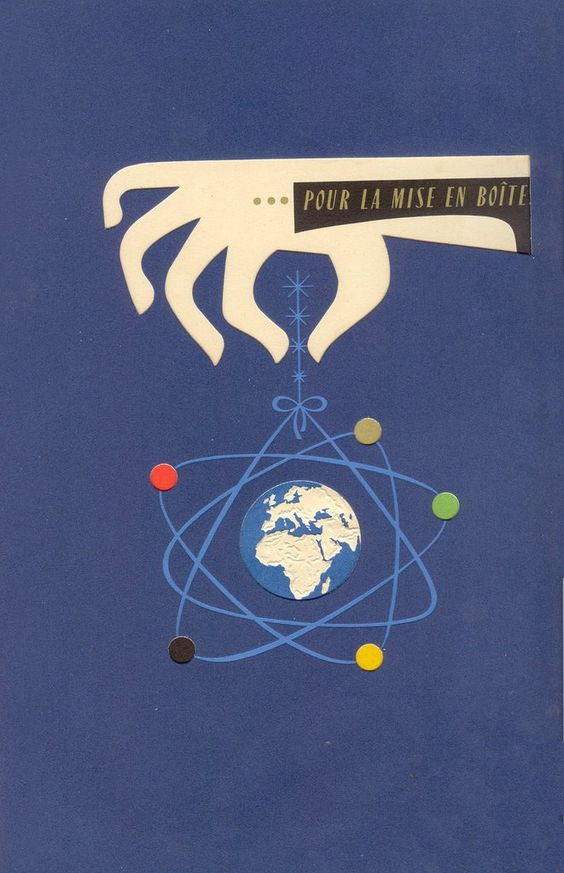“Strange Doctrines…” | The Resurrection on Trial by the Raconteurs of Mars Hill & the Architects of Atomism

IT IS OFTEN ASSUMED BY THE CLERIC that Paul the Apostle agreed with Saul the Pharisee, his fleshly counterpart, on any number of extra-Biblical doctrines, particularly the immortal soul; that the road to Damascus did little to reform his erstwhile faith in the celebrated oral dogma of Hellenistic Judaism—despite an intervention by the written Prophets, whom I have no doubt rehabilitated him; nor abolish his wealth of worldly education, particularly a diploma in Platonism. When Ananias found the last Apostle shortly after his arrival in Damascus, he met the authenticated Saul—a blind man. “And immediately there fell from his eyes as it had been scales: and he received sight forthwith, and arose, and was baptized (Acts 9:18).” Straightway he preached Christ in the synagogues, and as he did so, “increased the more in strength, and confounded the Jews which dwelt at Damascus.” By this we are to understand that his conviction of the truth of the bona fide religion strengthened tenaciously every day as he made obsolete the dark speeches of his former companions and acquaintances by thoroughly stifling their perversities at the throat. Paul’s life was a courtroom—and quite ironically, still is. The jury today must deliberate on the most elementary of Christian doctrines, because Paul’s good news for both the Jew and the Gentile was not the immortal soul. No, no—quite contrarily, it was the resurrection of the dead.
Paul’s second missionary journey would prove no exception to the judiciary drama. Likely arriving at Athens in 50 AD, the Apostle found himself in a pagan realm cankered with the most peculiar of ideals. Today their perverse appeals have become the very asphalt and pavement of Science by which we are expected to commute upon. And yet Paul, we shall come to learn, was to the intellectuals who shaped the rebar, mortar, and brick of the world around him a senile babbler, for he opposed everything which their philosophies deemed as true. Paul’s “spirit was stirred in him, when he saw the city wholly given to idolatry.” He therefore disputed first “in the synagogue with the Jews,” as was his proper custom, “and with the devout persons, and in the market daily with them that met with him (Acts 17:17).”
It is there in the marketplace where Paul confronted the fathers of modern cosmology, for we read: “Then certain philosophers of the Epicureans, and of the Stoicks, encountered him.” As atomic materialists stemming from the pre-Socratic schools of Democritus and Epicures, the Epicureans were originally a challenge to Hellenistic society and harsh debaters of Stoic living. While the Platonists dreamt of heaven, the imaginative conjuring of atomism advertised a reality consisting of invisible, indivisible bits of randomly colliding matter. Essentially, atomists developed their theory of matter to support a pantheistic worldview in which everything was divinely interwoven together. If one atom affects another it is conclusively because they are collectively of one and the same mind. The pre-Socratic philosopher Heraclitus equated fire and Zeus as the divine ruling order by referring to “the thunderbolt that stirs all things.” With Zeus, the atom came to form. Later Epicurus, who was better known for his emphasis on pleasure as the greatest achievable good, stapled to atomism the comic book notion that an infinite number of worlds or parallel universes could be adjacent or even wholly contained within each other so that one might occasionally overlap another.

Seth Shostak, lead astronomer at SETI—an institute founded by Carl Sagan in partnership with the NASA Ames Research Center and which hopes to discover extraterrestrial life in space—has perhaps best phrased Epicurean doctrine by stating: “The next time you check your moves in the mirror and reflect on how special you are, consider that somewhere in this universe or in another parallel universe, your double might be doing the same. This would be the ultimate Copernican Revolution. Not only are we not special, we could be infinitely ordinary.”
In her book, The Mystery School, occultist Grace F. Knoche exhibits inside knowledge of the atoms esoteric ancestry, particularly its Mystery School origin: “The physicist cannot point to the physical atom, yet he knows it exists as the basis, the foundation, of all matter; the student of theosophy cannot show you a Mystery school, yet he knows it exists as the heart or atomic center of the spiritual and intellectual life of the planet. Who then would dare assert the non-existence of the Mysteries, of this potent atom of esotericism, when luminous traces of spiritual power are seen scattered all over the world? If our physical bodies are rooted in invisible fiery lives, why should not our human spiritual, intellectual, and moral bodies likewise have their origin in the spiritual and intellectual fire-mist of the planet?”
Atomism eventually won British chemist John Dalton a Royal Medal in 1826 for its prolonged discovery. Dalton maintained that chemicals always contain whole-number ratios of atoms—the very reason we say H20 rather than H2.40. He furthermore suggested that we cannot have half an atom or the fraction of an atom, only whole atoms. Belief in the atom is faithfully subscribed to and yet it has never been seen with an optical microscope or the naked eye due to the fact that visible light is thousands of times larger. As further perspective, a single sheet of paper is roughly half a million atoms thick. In other words, one atom is as small to an apple as that very apple is to the proposed size of globe earth. For this very reason chemists employ x-rays—first developed in the 1890’s by German scientist Wilhelm Rontgen, who aptly realized that photographs taken with x-rays allowed him to see through objects—and bounce them off crystals. Let me be clear, we are all made of smaller parts. I would be a fool to deny it. And yet, need I remind my reader that Occultists are aficionados at maintaining their purported cosmogony where it cannot be seen by the naked eye nor otherwise perceived? Deception abounds at the micro and the macro level. I also recognize that atoms are thus far from being a mere theoretical concept anymore. The development of a scanning tunneling microscope in 1981—an instrument for imaging surfaces at the atomic level—won its inventors, Gerd Binnig and Heinrich Rohrer, the Nobel Prize in physics in 1986. Scientists have seen them. They have toyed with them. And they have also sought to manipulate them.
 Perhaps the atomists of Athens thought Plato’s allegory of the shadowy cave and his immortal soul, which might escape the illusion of death by ascending to his heavenly world of Forms, too simple minded. Platonism held a dualist model of the soul, preferring an immortal soul which can exist independently of the body and maintain its consciousness, whereas Epicurus was a true materialist and balked at the assertion of a soul’s ascension into the spiritual realm. The Stoic at least in part argued for Aristotle’s position. Blending dualist and materialist qualities into a sort of spiritual alchemy, Aristotle held that the soul is “the form (or actuality) of a natural body which has life potentiality,” whereas the Stoic maintained that the soul is not immortal but could and would survive the destruction of the body. In short, the ancient atomists did not subscribe to Plato. For these reasons the Greek philosopher Aristoxenus of Tarentum—a pupil of Aristotle—recorded that Plato hated Epicurean-thinking and had wished all of Democritus’ books to be burned.
Perhaps the atomists of Athens thought Plato’s allegory of the shadowy cave and his immortal soul, which might escape the illusion of death by ascending to his heavenly world of Forms, too simple minded. Platonism held a dualist model of the soul, preferring an immortal soul which can exist independently of the body and maintain its consciousness, whereas Epicurus was a true materialist and balked at the assertion of a soul’s ascension into the spiritual realm. The Stoic at least in part argued for Aristotle’s position. Blending dualist and materialist qualities into a sort of spiritual alchemy, Aristotle held that the soul is “the form (or actuality) of a natural body which has life potentiality,” whereas the Stoic maintained that the soul is not immortal but could and would survive the destruction of the body. In short, the ancient atomists did not subscribe to Plato. For these reasons the Greek philosopher Aristoxenus of Tarentum—a pupil of Aristotle—recorded that Plato hated Epicurean-thinking and had wished all of Democritus’ books to be burned.
Quite contrarily, the Stoics represented the new philosophical movement of Hellenistic thinking and elitist society, and vainly hoped to maintain a lifetime’s pursuit of philosophical virtues within the framework of Greek ethics, all of which had been handed down to them from Plato and Aristotle. As a father of metaphysical logic, Zeno was the administrator of the Stoic school of philosophy, which he taught in Athens. So if his disciples and the Epicureans gathered together, it was likely to argue—and argue they did. The Epicureans quibbled for the atomistic void hypothesis while the Stoics sought to discredit them with the paradoxes of Parmenides according to Zeno, and it should be noted that Isaac Newton and Albert Einstein later came to the defense of Democritus and the Epicureans in their own revised editions when explaining the theory of absolute space and the theory of relativity, in that order.
Luke further explains of their centuries-long tiff: “all the Athenians and strangers which were there spent their time in nothing else, but either to tell or to hear some new thing (Acts 17:21).” From stage right, Paul enters in. Among this tug-of-war of Occultism in the halls of Science the once-Pharisee from Jerusalem thrust upon their laps the truest science which ever was—and will soon again prove to be. Finally, those who vehemently opposed each other could at least in part mutually agree upon one thing. Paul had arrived in Greece and had become a promoter of strange doctrines.
The raconteurs of Mars Hill said to their opposing party (like opposing atoms attempting to dance through the void): “What will this babbler say?” And yet for others: “He seemeth to be a setter forth of strange gods: because he preached unto them Jesus, and the resurrection (Acts 17:18).”
The world was wrangled by Hellenistic Platonism and—always eager for fresh produce of intellectual curiosity—Paul was cordially invited to Mars Hill, its soapbox. Of this historical event we read:
“And they took him, and brought him unto Areopagus, saying, May we know what this new doctrine, whereof thou speakest, is? For thou bringest certain strange things to our ears: we would know therefore what these things mean (Acts 17:19-20).”
One might wonder why the Jews of Athens, whom Paul first met with—especially his Pharisee contemporaries—hadn’t thought to school the Epicurean or the Stoic on the matter of the resurrection. Perhaps this is not simply so because the resurrection was a unique Christian doctrine; perhaps more-so because the oral teachings of the Jews had already blended mystical concoctions with the pure faith of Moses. Their preference for the dark speeches of Pythagoras and Platonism is already established. This is precisely what Saul the Pharisee had turned away from. For the first-century Jew, the road to the Kabbalah was already paved before them. Pantheistic to its core, the Kabbalah states: “In the flow of the holy spirit, one feels the divine life force coursing the pathways of existence, through all desires, all worlds, all thoughts, all nations, all creatures.” And according to Jewish mystic Moses ben Jacob Cordovero, the Kabbalah regrettably adds:
“The essence of divinity is found in every single thing—nothing but it exists. Since it causes everything to be, nothing can live by anything else. It enlivens them; its existence exists in each existent. Do not attribute duality to God. Let God be solely God. If you suppose that Ein Sof [the Eternal, literally “without end”] emanates until a certain point, and that from that point on is outside of it, you have dualized. God forbid! Realize, rather, that Ein Sof exists in each existent. Do not say, “This is a stone and not God.” God forbid! Rather, all existence is God, and the stone is a thing pervaded by divinity.”

By the time Paul was taken to the prominent rock outcropping in Athens known as the Areopagus, the very plot—located northwest and within eyesight of the idolatrous Acropolis (which the Apostle likely toured)—had already functioned as an ancient court for the trying of homicides, violent crimes, and religious matters. How appropriate. In his passionate address to the Athenians, Paul famously chastised their gluttonous superstitions. Concerning their vast collection of marble busts and incense-fragranced idols, specifically one in particular, he said: “For as I passed by, and beheld your devotions, I found an altar with this inscription, TO THE UNKNOWN GOD. Whom therefore ye ignorantly worship, Him declare I unto you (Acts 17:23).”
The Apostle was essentially saying, “You can have your lifeless gods and sciences falsely-so called, but that unknown god over there, he’s not a Platonist, nor is he an atomist. He is actually quite different from anything a man might naturally imagine.”
To the mistaken atomist he said: “For in Him we live, and move, and have our being.”
Creation was not some random cataclysmic smashing of atoms, as Democritus would have us believe. Life did not begin in a primordial void, nor had man evolved from a fish, both of which Anaximander of Miletus had poetically proposed. “God that made the world and all things therein, seeing that He is Lord of heaven and death, dwelleth not in temples made with hands;” particularly the Mystery schools; “Neither is worshiped with men’s hands;” especially their perverse doctrines which hopes to shape Him; “as though He needed anything, seeing He giveth to all life, and breath, and all things.”
By stating that God “hath determined the times before appointed, and the bounds of their habitation” the Apostle did not incite the Stoic with visions of Platonism. Paul did not assure the Stoic of the immortal soul, nor did he convince the Epicurean that there was one. He certainly did not affirm Hellenistic Judaism’s insistence that we escape the illusion of death and ascend to heaven after we die. Rather, Paul took them to Holy Scripture, and by doing so, enlightened them to a central tenant of the Christian faith—the resurrection.
We further read: “And when they heard of the resurrection of the dead, some mocked; and others said, We will hear thee again of this matter (Acts 17:32).”
“Howbeit certain men clave unto him, and believed,” we are told, among the which was Dionysius the Areopagite, a member of the Athenian high council and likely a Stoic, “and a woman named Damaris, and others with them (Acts 17:34).” Most, however, remained. On Mars Hill the Nephilim spirits, issuing forth from the marble nostrils of their gods, clave unto the tongues of esoterists so that the hidden things might be conjured and manipulated by them; specifically so that the very church which the Apostle sought to build upon might be fooled. Even today—especially today in the Apostle’s absence—the discourse of demons continues.

Quantum physics has lit a match to the fuses of Zeus’ thunderbolts so that we today may haphazardly climb the Areopagus and snoop into the religious and mystical artistry of the peculiar, and dare I say it, spiritual realm of the renaissance alchemist. Pantheism is wedded with Science. On an atomic level, Scientists affirm that particles do not appear until they are directly observed. The Nobel Prize-winning physicist Erwin Schrödinger has devoted himself to the idiosyncratic. When not directly observed, he maintains, electrons and other subatomic particles diffract as waves of light, only to behave like particles when a human measurement is attempted. “It’s as if somebody were playing a trick on us,” he says. “Imagine for example that you have a relay system. We know that the trains cannot go faster than light, but you might by studying the timetable very carefully discover that during the night trains have to be returned to their starting point faster than light, so behind the scenes extraordinary things are happening…” Essentially, it’s as if these particles exist in multiple places simultaneously until directly observed.
“I’m also obliged to admit,” Schrodinger shrugs, “that there’s nothing I can do with these.” Presently, as always, there are human limitations to the observable study of the esoteric. “I cannot use these long-range effects to send messages faster than light….there’s this strange dichotomy between what I can do. Human actions are limited by locality…”
In the last Apostle’s absence, we find ourselves waking up once more in Egypt, the idolatrous land of ritual and dark magic which the Lord had commanded that we “henceforth return no more that way (Deuteronomy 17:16). Rather than living in a world where science seeks out all that is natural to the works of our Creator, I Am that I Am; we are expected to live by the Hermetic maxim of pantheism; “All is in The All.” In her book, 9 Life Altering Lessons: Secrets of the Mystery Schools Unveiled, Kala Ambrose writes: “….some things do travel faster than the speed of light. This work has begun to be explored, as evidenced by a Paris research team in the 1980’s which discovered that under certain conditions and circumstances, subatomic particles such as electrons are able to simultaneously communicate with each other. It was found that distance was not a factor in their ability to communicate, which revealed the understanding that the particles were aware of what the other particles were doing, regardless of how far away they were from each other. Fascinating isn’t it? Mystics have taught a similar concept for eons, that We Are All One, and that as part of the Whole, the Energy/God/Spirit whatever you wish to call it, is always aware of you on some level.”
Pantheism is an edict of this great delusion. We must therefore rise each morning recognizing the hour in which we were purposed to live and face a world bedded with strange doctrines, whereas one thing can suddenly be in two separate places. We must contend with the fact that “the laws of the subatomic world and the laws of the human mind parallel each other precisely, exquisitely, and elegantly, down to minute details,” as American futurist author and self-described agnostic mystic Anton Wilson has wishfully stated. We must be brave and courageous while inhaling a supposed reality of ever-deepening mysteries promoted by the Occult and endorsed by its wicked slave master, whereas the practitioner deals in the sort of Ouija board and tarot card Sciences which begs for a response and yet believes he is not being fooled by the manifested guidance of a demonic entity conjured from beyond the looking-glass. We must rise each day understanding advertised reality doesn’t really exist until it is perceived and measured from the wizard’s purse. We must recognize that they have indeed broken through to the other side. This is the midnight hour—an existence which Indian guru Paramahansa Yogananda once pronounced as a dream within a dream. Or as he further put it: “From science then, if it must be so, let man learn the philosophic truth that there is no material universe; its warp and woof is maya, illusion.” We must therefore boldly swim upstream against the terrible current of this great delusion, and with a sarcastic sigh, we sip our coffee and say hello to quantum entanglement.

Occultist Brendan D. Murphy, who emphasizes DNA activation and “the forces and energies produced by our consciousness that act on the world around us,” writes in wake up world: “Previously, it was believed that once things got to the level of atoms and molecules, the universe started acting strictly deterministically again, according to predictable Newtonian laws. This is no longer a scientifically viable view. A review of developments on entanglement research in March 2004 by New Scientist writer Michael Brooks concluded that ‘Physicists now believe that entanglement between particles exists everywhere, all the time.’”
It was these hidden Mysteries which Paul openly shrugged, despite likely being educated in them, just as Moses once was. To the atomist of Epicurean-thinking, Paul quipped: “And the times of this ignorance God winked at; but now commandeth all men everywhere to repent (Acts 17:30).” To put this in a slightly different way, God is done winking. “Because He hath appointed a day, in which He will judge the world in righteousness by that man whom He hath ordained.” It is Jesus alone who is worthy to righteously judge, for God “hath given assurance unto all men, in that He hath raised Him from the dead.” This is good news. This is the resurrection.
Whether speaking on behalf of the unknown God from Mars Hill or scribbling on papyri to faraway lands by dim candlelight, for Paul the resurrection was everything—and rightly so. Had Saul the Pharisee written in Paul’s place, the message would undoubtedly be Hellenistic. But for Paul the Apostle, his message fell in perfect cadence with the Prophets. From the church in Corinth, perhaps the very year he argued from Mars Hill, Paul wrote to the church of Thessalonica the precise message which the idolatrous atomist and the Platonist had heard:
“…and how ye turned to God from idols to serve the living and true God; and to wait for His Son from heaven, whom He raised from the dead, even Jesus, which delivered us from the wrath to come (I Thessalonians 1:9-10).”
Paul the Apostle did not attempt to convince Christ believers that they might circumnavigate the long wait for His return by simply dying and meeting him in heaven. No, sir; wait they must. If not for Christ, then those which are fallen asleep—Paul’s own words, not mine—awaiting their resurrection from the dead, have perished. How can this be so if the soul is immortal and enjoying His fellowship unspoiled in heaven? While staying in Ephesus sometime in 54-55 AD, Paul instructed this to the Corinthians:
“And if Christ be not raised, your faith is vain; ye are yet in your sins. Then they also which are fallen asleep in Christ are perished. If in this life only we have hope in Christ, we are of all men most miserable. But now is Christ risen from the dead, and become the firstfruits of them that slept (1 Corinthians 15: 17-20).”
Being ever so consistent and always in step with the whole of Scripture, Paul wrote to the church at Philippi:
“For our conversation is in heaven; from whence also we look for the Saviour, the Lord Jesus Christ: Who shall change our vile body, that it may be fashioned like unto His glorious body, according to the working whereby he is able even to subdue all things unto himself (Philippians 3:20).”
Our meeting with the Lord however is mutually scheduled so that no man may receive his reward without the other. To Corinth he wrote: “so that ye come behind in no gift; waiting for the coming of our Lord Jesus Christ (1 Corinthians 1:7).” He was no doubt addressing the Stoic and the Platonist when he affirmed our mortal souls. But there is hope for the righteous. To this effect he wrote:
“So when this corruptible shall have put on incorruption, and this mortal shall have put on immortality, then shall be brought to pass the saying that is written, Death is swallowed up in victory (1 Corinthians 15:54).”
Today the resurrection is on trial, and the Christian-Platonist of every Mars Hill on earth has no doubt already protested with a shaking fist: “I don’t care what you say, Paul said to be absent from the body is to be present with the Lord! That line trumps them all!” This is truly the speech of a babbler—and I am constantly reminded of it—for Paul never once said to be absent from the body is to be present with the Lord. Rather, the tentmaker is stating what would otherwise be a terrible sales pitch. It is better to be absent from this body—tent of destruction—and clothed with our heavenly body. And those are two completely different things.
“For we know that if our earthly house, this tent, is destroyed, we have a building from God, a house not made with hands, eternal in the heavens. For in this we groan, earnestly desiring to be clothed with our habitation which is from heaven, if indeed, having been clothed, we shall not be found naked. For we who are in this tent groan, being burdened, not because we want to be unclothed, but further clothed, that mortality may be swallowed up by life. Now He who has prepared us for this very thing is God, who also has given us the Spirit as a guarantee. So we are always confident, knowing that while we are at home in the body we are absent from the Lord. For we walk by faith, not by sight. We are confident, yes, well pleased rather to be absent from the body and to be present with the Lord (2 Corinthians 5:1–8).”
The tentmaker likens our present mortal bodies with an earthly tent, and should we have the Spirit as a purchased insurance of our salvation, we needn’t worry if it is destroyed because a building from God awaits us. There is no context here which presents a meeting with God as a disembodied spirit, as the Platonists would have it. Rather, we will not enjoy God’s presence in this body. By stating that “we shall not be found naked,” Paul repeatedly referred his audience away from the immortal soul and to Job, who set the standard of true religious thinking when he lamented (in his most deplorable state):
“For I know that my redeemer liveth, and that he shall stand at the latter day upon the earth: And though after my skin worms destroy this body, yet in my flesh shall I see God: Whom I shall see for myself, and mine eyes shall behold, and not another; though my reins be consumed within me (Job 19:25-27).”
Job would certainly agree with Paul, that his “conversation is in heaven; from whence also we look for the Savior, the Lord Jesus Christ.” But Job also clearly understood that his eyes would not behold Him until “he be fashioned like unto His glorious body (Philippians 3:20).” When we compare this language to 1 Corinthians 15:51–54, also written by Paul, it becomes even clearer. This mortal body shall be clothed with immortality. This is our blessed hope of salvation. The passage reads:
“Behold, I tell you a mystery: We shall not all sleep, but we shall all be changed—in a moment, in the twinkling of an eye, at the last trumpet. For the trumpet will sound, and the dead will be raised incorruptible, and we shall be changed. For this corruptible must put on incorruption, and this mortal must put on immortality. So when this corruptible has put on incorruption, and this mortal has put on immortality, then shall be brought to pass the saying that is written: ‘Death is swallowed up in victory’ (15:51-54).”
Saul the Pharisee would certainly not have agreed with the Apostle Peter when pronouncing the good news of the resurrection to the crowd on the day of Pentecost: “Men and brethren, let me freely speak unto you of the patriarch David, that he is both dead and buried, and his sepulcher is with us unto this day (Acts 2:29).” For Paul the Apostle, however, there would be no disagreement. “It is hard for thee to kick against the pricks,” God told Saul on the road to Damascus. Saul surrendered. David was dead and buried, just as Adam and Even were dead and buried. Abraham was dead and buried. Isaac and Jacob were too. And in only a few years, the last of the Apostles, even those blessed witnesses who had seen the resurrected Christ with their own eyes, they would join them. To this very hour their souls lie in waiting.
They wait…
…for the sound of a trump…
Paul’s entire life was a courtroom. He stood before Felix. He stood before Agrippa. And his meeting with Nero did not end so well. This is because the true religion of the Prophets and the Apostles defied every sensibility of the Hellenistic world. It was the resurrection of the dead which stood on trial—truly, a strange doctrine. And for the Platonist-Christian today, it still is.
Perceiving “that one part were Sadducees and the other Pharisees, he cried out in the council, “Men and brethren, I am a Pharisee, the son of a Pharisee; concerning the hope and resurrection of the dead I am being judged! (Acts 23:6)”
-Noel
Dark Speeches: the Mortal Soul Series
Part 1: Dark Speeches—an Ongoing Spiritual Leprosy (and Introduction to Plato)
Part 3: The Gospel According to Plato | aka “the Secret Doctrine” (Globe Earth and the Immortal Soul)